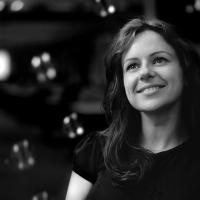
Raised in a rural village in the Northeast of England, Forrest-Beckett’s home was built upon a filled mine shaft that buckled under the weight of two families embraced as a nuclear unit.
As a sickly child she observed her parent’s strong work ethic, who’s physically demanding displays of determination did not lack care or creative flair. When well, she would shadow her mother’s endless cleaning and decorating rituals. Growing stronger, she preferred the tools of her father’s trade, learning to play the role of a ‘Brickie’.
The first family member to attend higher education, while saving to fund her undergraduate study she trained as a developer of database systems. A profession she would illustrate to her parents as an electronic form of building and cleaning a very tall, anti-Ballard ‘High Rise’ apartment block, where, akin to a Rubik cube puzzle, residents could be repositioned to live alongside one another, as equals, beyond systems of class.
After graduating with a First-Class, Fine Art Honours Degree in 2007, she moved to London to catch-up on the world of contemporary art which had never been available to her growing-up. While working part-time in the capitals financial district, she witnessed the economic crash, after which, she has described the precarity of this economic meltdown as an undercurrent that would inform all of her practice.
During this time she was awarded a Creative Technician placement at Battersea Arts Centre, which was when she began to produce site-reflective installations beyond the gallery environment. Responding to two semi-derelict yet financially flourishing postcodes in the heart of London, in 2010, ‘Still Life’ and ‘Cleanliness is next to Godliness’ explored the notion of what it meant to cleanse an environment literally, socially, ethically and spiritually, through the appropriation of cleaning rituals.
By 2014, she was awarded an Artists Access to Art Colleges (AA2A) residency, which was when her practice started to fully process the social impact of the economic calamity witnessed in 2008. Appropriating windows and their furnishings, she began a psychologically charged ‘conversation’ with Louise Bourgeois ‘Cell Series’, but unlike Bourgeois dwelling spaces, she began to empty her ‘Moratorium Series’ and precariously counterbalance her architectural cells, as a declaration of a potential breaking point.
Graduating in 2017 with an MA, Fine Art (Distinction) and a ‘Best Student’ award, as her portfolio of work began to reach new heights, her architectural spreadsheets ‘Blind Faith’ and ‘Flex’, and the converging and diverging forces harnessed within ‘{a violent intersection}’ and ‘Kalopsia’ were all on the verge of collapse. At this point, she recalls her practice becoming the epitome of the word ‘jiggered’; a phrase her father used to utter when returning from sustaining long days of backbreaking work that left him incapacitated in his early 50’s, which was when ‘(net, work}’ evolved in the form of surveillance technology, where in, a series of live-streams kept a close eye on overseeing six of her structurally precarious sites, to draw attention to, if not remove the tension of pushing psychological limits across these interconnected events.
Upon graduating she was invited to spend six weeks exploring the Peak District’s mythology, topography, and geographic histories, through collaborative and experimental practice, funded by Quad Gallery, in Derby, where she began to explore the hollowness of language and image that can form over long periods of time. In ‘Rev{o,e}l{u,a}tions, 2018‘ she placed a virtual, live-streamed image of a domestic shrine within the gallery, locating personal myth making alongside the regions mythologies, while ‘The Mountain and the Cave, 2018‘ cross-examined contradictory proverbs that followed the contours of the peaks and caverns of the Manifold Valley.
By 2020, she was awarded a prestigious 10 month Fellowship by the South West Creative Technology Network to explore the mattering of human-data communication and summon a new form of data voice. What culminated in what she titled ‘Labour of Love’ was a series of wholehearted conversations (or conversations full of holes), wherein, while looking for a means to process heartache in a matter-of-fact way with some emotional distance, she began to execute a pattern making process, as a means to slowly-process her heartache, using Robert Sternberg’s Triarchic Theorem for Love.
She is currently taking part in a 6 month ‘Critical Mass / Sculpt’ programme with Mark Devereux Projects to build networks and work on an Arts Council DYCP proposal that will help her work towards realising a series of constellation installations on a national, if not an intergalactic scale.